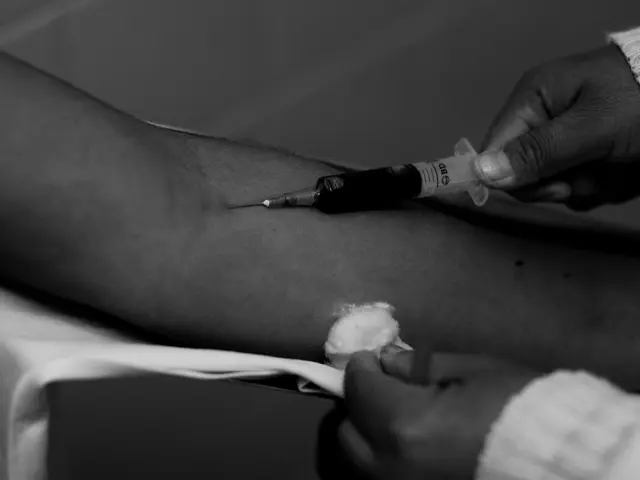Regenerative Medicine and Stem Cells: Overhyped or Truly Promising?
Sick of the same old treatment methods? Regenerative medicine, the up-and-coming player in the medical world, is all about healing the root causes, not just the symptoms. This revolutionary approach focuses on replacing or fixing damaged cells, organs, or tissues to restore normal function – a game-changer for patients worldwide.
Take someone suffering from type 1 diabetes as an example. Their body can't produce insulin, requiring them to rely on daily insulin injections to manage their blood sugar levels. Regenerative medicine aims to solve this predicament by regenerating the islets of Langerhans, allowing their body to naturally produce insulin and giving them a life free from painful injections.
So, where's the hype coming from? Techniques like creating cells that can transform into different types, healing entire organs, and techniques to reverse osteoporosis have been making headlines. Yet, despite the jaw-dropping breakthroughs, regenerative medicine treatments have yet to become household names.
What's holding it back? The road from lab to patient's bedside is long and winding, filled with regulatory hurdles, financial constraints, and technical challenges. Health authorities like the FDA play a crucial role in ensuring that new treatments are safe and work, but stringent requirements can slow down progress. Add to that the high costs associated with these innovative treatments, and you've got a perfect storm that makes widespread use a distant dream, even if cost savings down the line might tip the scales in its favor.
But wait, there's more. When desperate patients are searching for solutions, unscrupulous actors are waiting to pounce. Preying on patients’ optimism and exploiting their dire medical situations, these deceitful entities offer unproven therapies, cashing in on their desperation. To ensure patients stay safe, strict regulation and harsh crackdowns on these entities are essential.
Professor Giulio Cossu of the University of Manchester sums it up: "From the first blood transfusion to bone marrow transplantation, cloning, development of viral vectors, ES [embryonic stem cells] and, more recently, iPS [induced pluripotent stem] cells, genome editing and organoids hold great promise for the future."
In order to bring regenerative medicine into mainstream medicine, scientific, regulatory, financial, and technological advancements must be combined to make treatments affordable, safe, and efficient. The journey isn't easy, but the potential rewards make it worth every challenge faced. The future belongs to those who dare to explore and adapt - are you ready to help usher in a new era of medical marvels?
- Regenerative medicine aspires to rejuvenate the islets of Langerhans in type 1 diabetes patients, enabling their bodies to produce insulin and ultimately freeing them from daily injections.
- In the realm of regenerative medicine, cells are being engineered to transform into various types and healing entire organs is no longer a far-fetched concept.
- Despite groundbreaking advancements in therapies for chronic diseases and fitness, regenerative medicine treatments have yet to become commonplace due to regulatory hurdles, financial constraints, and technical challenges.
- The Food and Drug Administration, and other health authorities, play a crucial role in ensuring new treatments are safe and effective, but their stringent requirements can delay progress.
- With the promise of stem cells, genome editing, and organoids, Professor Giulio Cossu envisions a bright future for regenerative medicine.
- To unlock the potential of regenerative medicine, we must combine scientific, regulatory, financial, and technological advancements to create affordable, safe, and efficient treatments, ushering in a new era of medical marvels.







